Abstract
Mice were exposed to lead from birth by substituting solutions of lead acetate for the drinking water of their mothers. The suckling mice were thus exposed to lead through their mother's milk and, at weaning, directly through the drinking water. Controls received equal concentrations of sodium acetate. No deaths of offspring or mothers occurred during the first 90 days of exposure. It has been suggested recently that lead exposure may account for some incidences of behavior disorders in children. Levels of motor activity of individual offspring were measured from weaning until 70 days of age in specially designed activity cages. Lead-treated mice were more than three times as active as age-matched or size-matched controls.
Treated and control animals were administered drugs currently used in the treatment and diagnosis of hyperactivity in children. All control animals responded as expected to all drugs used in this study. However, lead-treated mice responded paradoxically to d- and l-amphetamine, methylphenidate, and phenobarbital. That is, the CNS stimulants suppressed their hyperactivity while phenobarbital exacerbated the lead-induced hyperactivity. These findings suggest that lead produces an animal model of hyperactivity which may have clinical relevance and which may explain some cases of hyperactivity in children.
Full text
PDF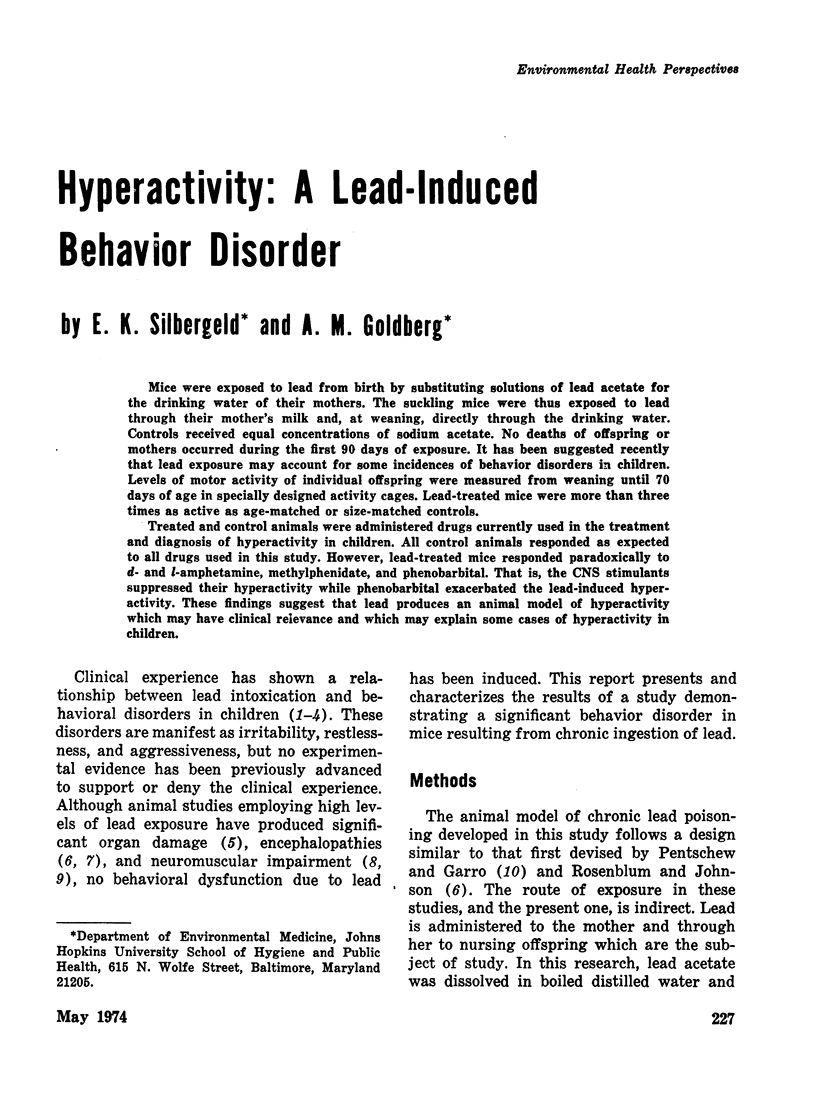

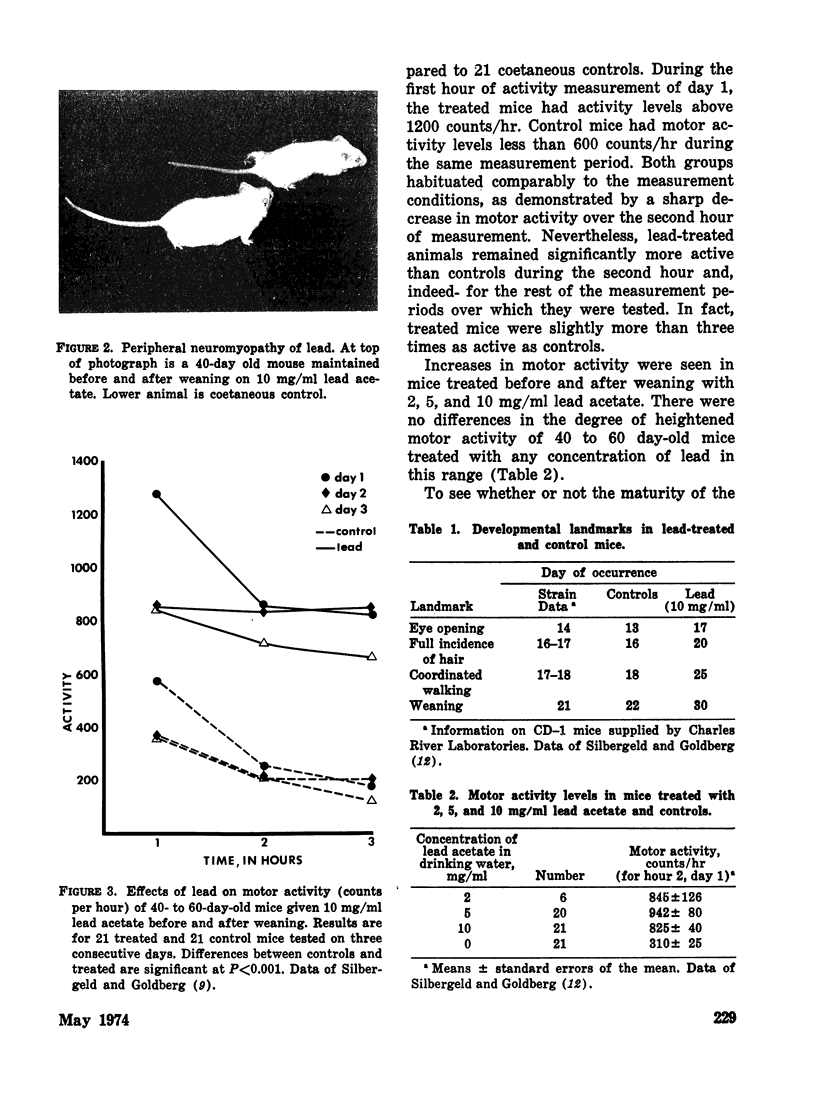
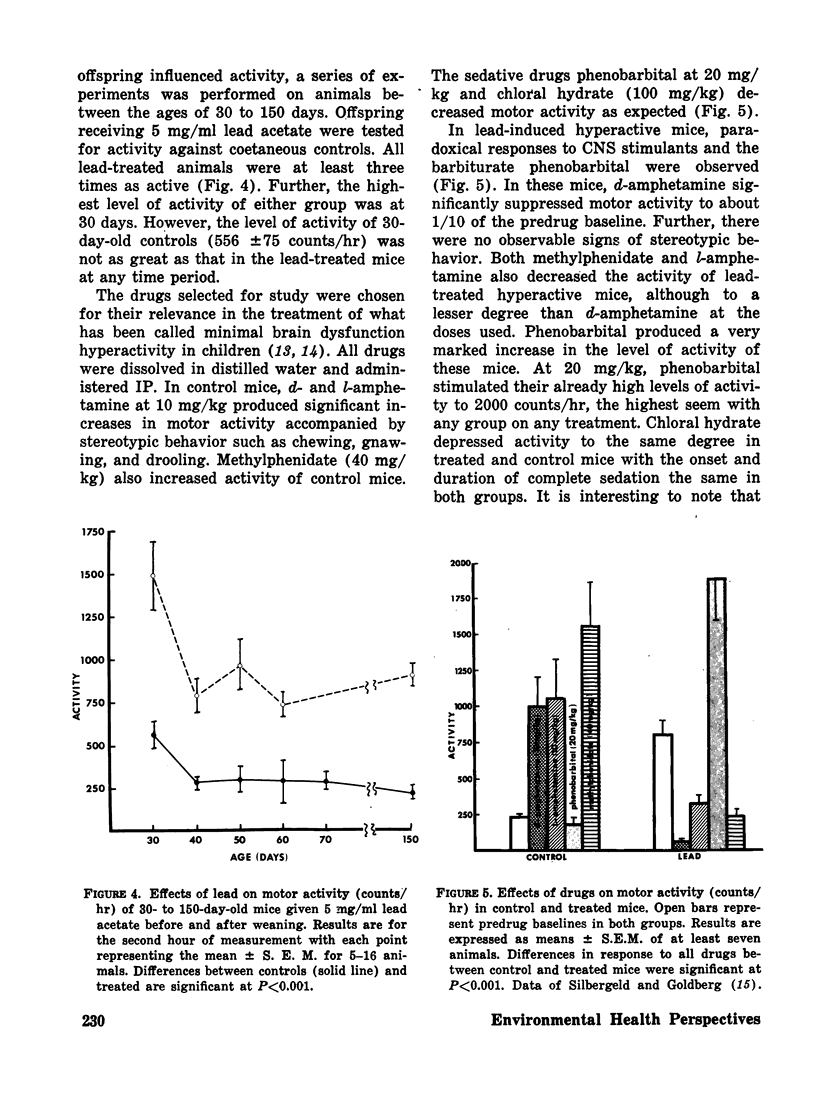
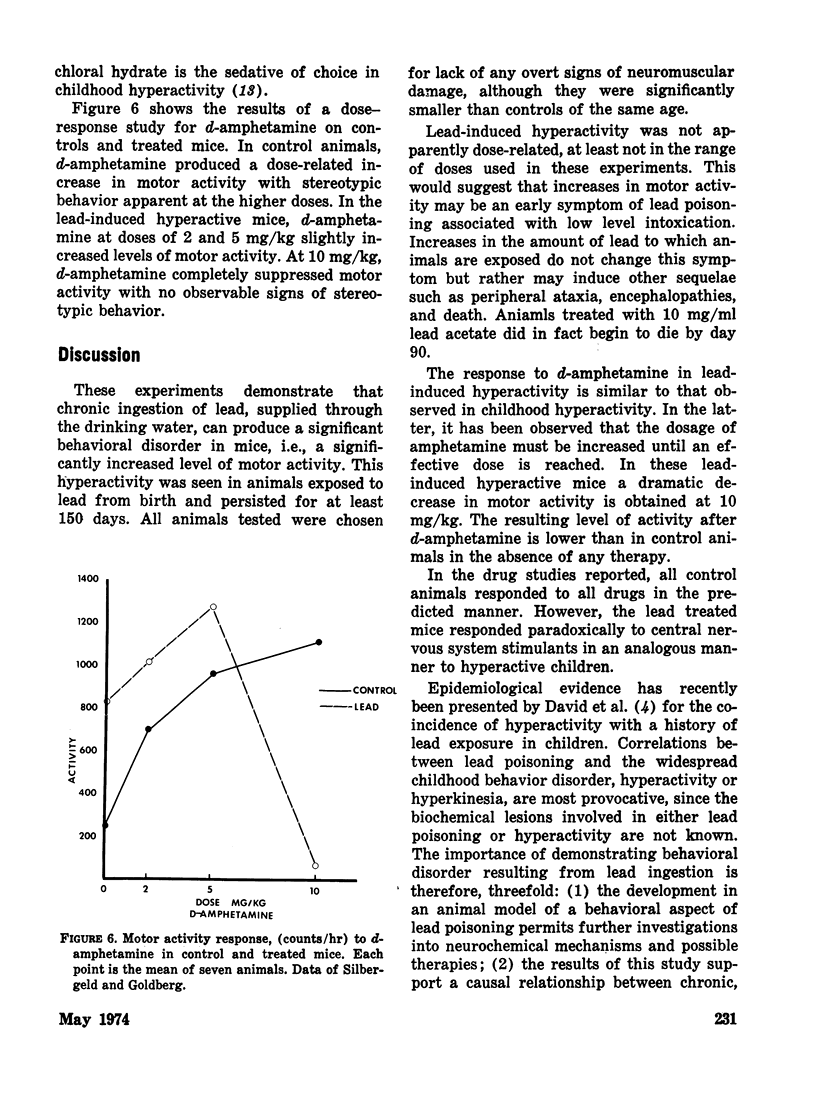
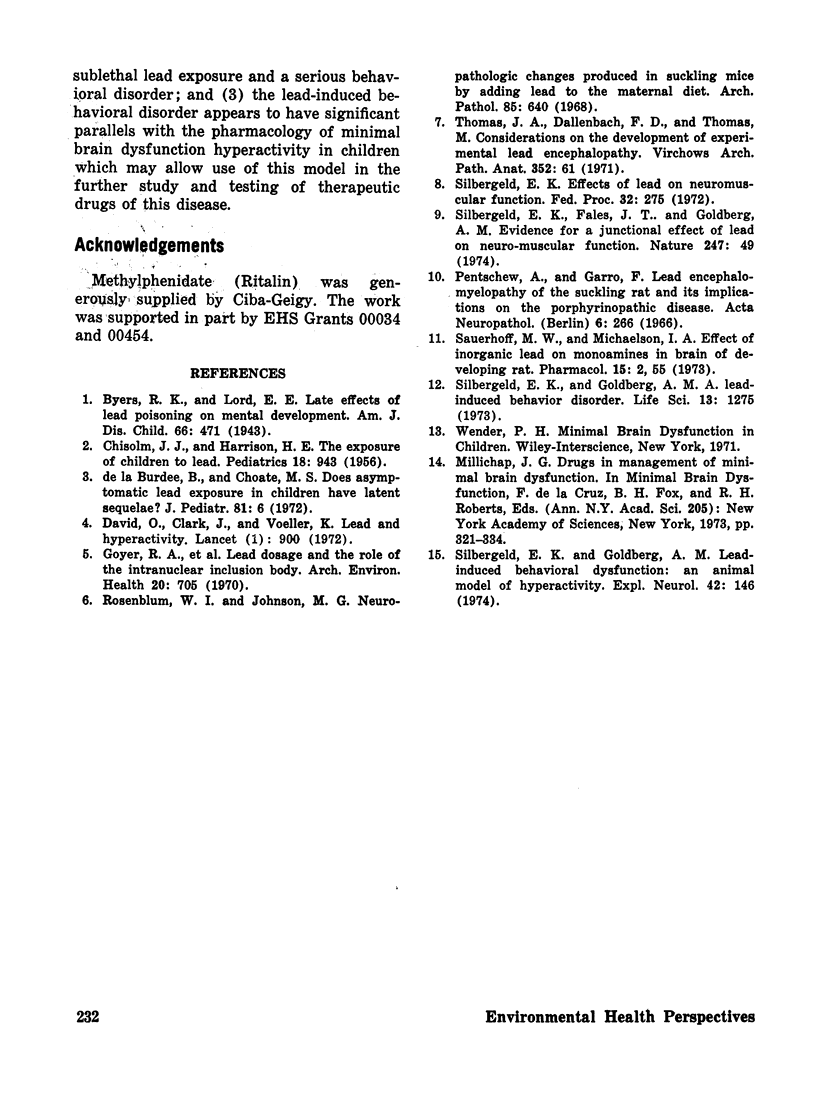
Images in this article
Selected References
These references are in PubMed. This may not be the complete list of references from this article.
- CHISOLM J. J., Jr, HARRISON H. E. The exposure of children to lead. Pediatrics. 1956 Dec;18(6):943–958. [PubMed] [Google Scholar]
- Goyer R. A., Leonard D. L., Moore J. F., Rhyne B., Krigman M. R. Lead dosage and the role of the intranuclear inclusion body. An experimental study. Arch Environ Health. 1970 Jun;20(6):705–711. doi: 10.1080/00039896.1970.10665647. [DOI] [PubMed] [Google Scholar]
- Millichap J. G. Drugs in management of minimal brain dysfunction. Ann N Y Acad Sci. 1973 Feb 28;205:321–334. doi: 10.1111/j.1749-6632.1973.tb43189.x. [DOI] [PubMed] [Google Scholar]
- Pentschew A., Garro F. Lead encephalo-myelopathy of the suckling rat and its implications on the porphyrinopathic nervous diseases. With special reference to the permeability disorders of the nervous system's capillaries. Acta Neuropathol. 1966 Jun 1;6(3):266–278. doi: 10.1007/BF00687857. [DOI] [PubMed] [Google Scholar]
- Rosenblum W. I., Johnson M. G. Neuropathologic changes produced in suckling mice by adding lead to the maternal diet. Arch Pathol. 1968 Jun;85(6):640–648. [PubMed] [Google Scholar]
- Silbergeld E. K., Fales J. T., Goldberg A. M. Evidence for a junctional effect of lead on neuromuscular function. Nature. 1974 Jan 4;247(5435):49–50. doi: 10.1038/247049a0. [DOI] [PubMed] [Google Scholar]
- Silbergeld E. K., Goldberg A. M. Lead-induced behavioral dysfunction: an animal model of hyperactivity. Exp Neurol. 1974 Jan;42(1):146–157. doi: 10.1016/0014-4886(74)90013-2. [DOI] [PubMed] [Google Scholar]
- Thomas J. A., Dallenbach F. D., Thomas M. Considerations on the development of experimental lead encephalopathy. Virchows Arch A Pathol Pathol Anat. 1971;352(1):61–74. doi: 10.1007/BF00549764. [DOI] [PubMed] [Google Scholar]



